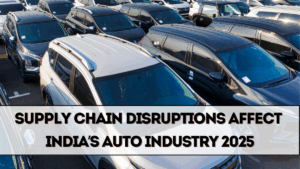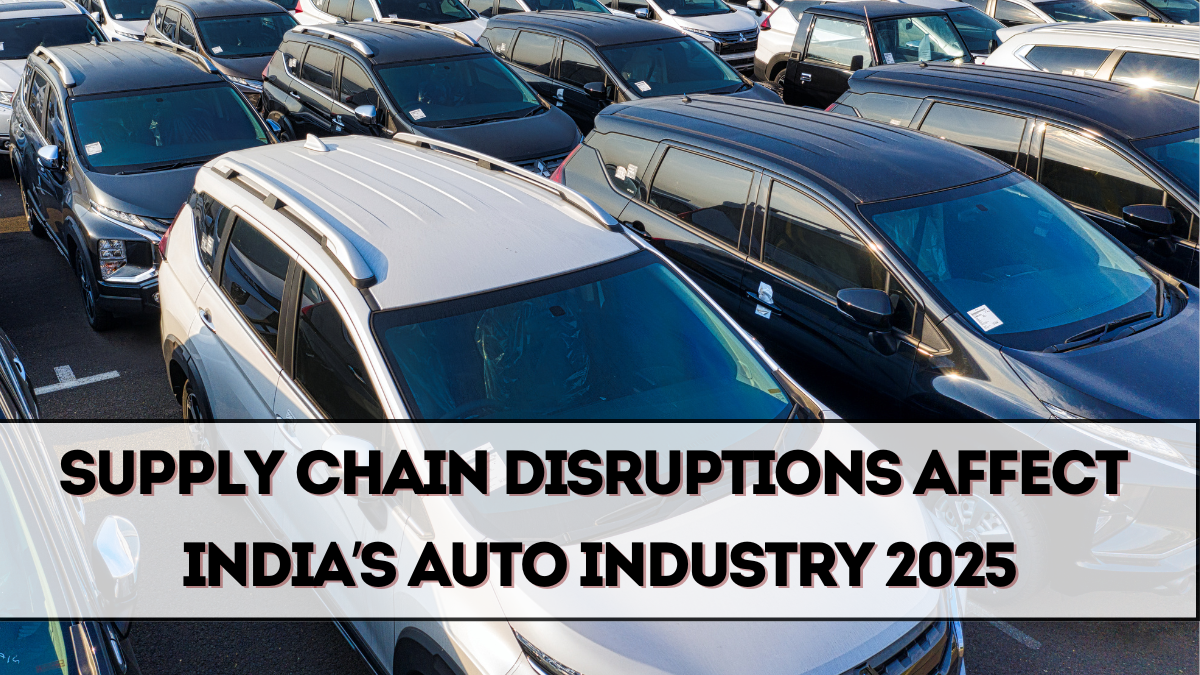The Indian automobile sector, one of the world’s largest, is facing serious supply chain disruptions in September 2025. The industry is grappling with semiconductor shortages, delayed imports, and rising raw material costs. These issues are creating bottlenecks in production and delivery timelines, forcing automakers to rethink strategies.
The crisis highlights how global challenges can deeply affect India’s auto manufacturing ecosystem.

The Semiconductor Shortage
One of the biggest concerns for automakers is the global semiconductor shortage.
-
Modern vehicles depend heavily on chips for infotainment, sensors, and safety features.
-
Delays in chip supply have slowed down production across Maruti, Hyundai, Tata, and Mahindra.
-
EV makers are even more affected since their vehicles require twice as many chips as conventional cars.
Experts warn the shortage may continue until mid-2026, putting pressure on automakers.
Impact on Production
Production lines are struggling due to component delays.
-
Automakers have cut down shifts in factories to manage shortages.
-
Waiting periods for popular models have stretched to 6–8 months.
-
EV deliveries are being delayed due to battery and chip dependencies.
This slowdown has forced companies to adjust sales forecasts downward for 2025.
Rising Costs of Raw Materials
Another major issue is the rising cost of essential raw materials.
-
Steel, aluminum, and copper prices have surged globally.
-
Battery materials like lithium and cobalt are costlier than before.
-
Automakers are forced to increase car prices despite slowing demand.
This creates a double burden for buyers—higher costs and longer waiting times.
Import Delays & Logistics
India imports several critical components from global suppliers.
-
Delays at ports have increased due to geopolitical tensions and shipping bottlenecks.
-
Freight costs have risen, adding to the burden.
-
Spare parts for luxury cars like BMW, Audi, and Mercedes are arriving late, frustrating buyers.
These delays are directly hitting customer satisfaction.
Automaker Responses
Automakers are adapting with new strategies.
-
Localizing supply chains to reduce import dependency.
-
Partnering with Indian suppliers for key components.
-
Building chip stockpiles to manage future shortages.
For example, Tata Motors has started sourcing more parts from domestic vendors to reduce risks.
Role of the Government
The Indian government is stepping in to mitigate the crisis.
-
Policies are encouraging semiconductor manufacturing in India.
-
Incentives are being given for EV battery production.
-
Infrastructure improvements aim to reduce logistics delays.
The Production Linked Incentive (PLI) scheme is seen as a game-changer for the long run.
Effect on Dealers and Buyers
Dealers and buyers are also facing challenges.
-
Dealers struggle to maintain inventory levels.
-
Buyers face long waiting times for delivery.
-
Price hikes have discouraged some customers from immediate purchases.
Despite this, demand for SUVs and EVs remains strong, keeping dealerships busy.
Analysts’ Views
Experts believe India must reduce dependency on imports.
-
A strong domestic semiconductor industry is essential.
-
Local suppliers need more investment and training.
-
Automakers should diversify sourcing to avoid over-reliance on specific countries.
If these steps are taken, the supply chain will become resilient in the long term.
Final Thoughts
The supply chain crisis of 2025 is a reminder of how interconnected the global auto industry is. For India, it is both a challenge and an opportunity.
Automakers are under pressure, but the crisis is pushing them toward localization, innovation, and resilience. Buyers may face short-term struggles, but the long-term outcome could be a stronger, self-reliant Indian auto industry.
FAQs
What is the main issue affecting India’s auto supply chain in 2025?
The semiconductor shortage is the biggest problem, along with delays in parts and rising material costs.
How are automakers responding?
By localizing supply chains, stockpiling chips, and partnering with Indian suppliers.
How is the government helping?
Through PLI schemes, EV incentives, and efforts to promote semiconductor manufacturing.
Are car prices affected?
Yes, rising raw material costs have led to price hikes across most segments.
Will the issue continue in 2026?
Experts believe supply chain disruptions could last until mid-2026, though local solutions may reduce the impact.
Click here to know more.
